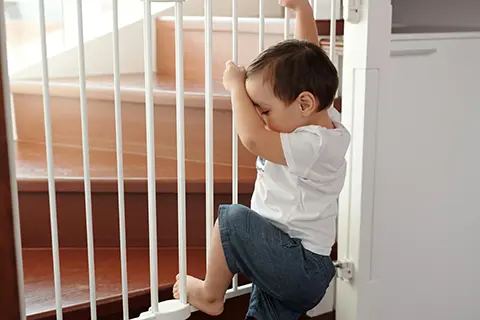
INJURY PREVENTION: In Canada, unintentional injuries are the leading cause of death in children and youth. Most of these preventable injuries are caused by motor vehicle collisions, suffocation, drowning, fire, poisoning, and falls. Unexplained injuries (e.g. fractures, burns), sentinel injuries, or injuries that do not fit the rationale provided or developmental stage raise concern for child maltreatment.
Keep your young children safe (CPS Caring for Kids) Injury deaths in Canada (PHAC) Injury prevention (CPS) Prevention of unintentional childhood injury (AFP)
Transportation in motorized vehicles including cars, ATVs, snowmobiles, etc.: Child car seat safety (Transport Canada) Child car safety (Parachute) Preventing ATV injuries (CPS) Snowmobile safety (CPS Caring for Kids)
- Never leave a child unattended in a vehicle. Those < 13 years should sit in the rear seat, away from all airbags.
- Car seats: Install and follow size recommendations as per specific car seat model, and keep in each stage as long as possible, until the weight and height limit of the seat is reached: Infant/toddlers in a rear-facing car seat; Children who weigh at least 10 kg in a forward-facing seat with a harness; Children who weigh at least 18 kg in a booster seat. Then use properly fitted lap and shoulder belt in the rear seat for children taller than 145 cm (4’ 9”) and < 13 years. Replace car seat if in a collision.
- Children and youth younger than 16 years of age should not operate an ATV or a snowmobile, including youth models.
Bicycle: wear bike helmets and advocate for helmet legislation for all ages. Replace if it has sustained impact or is > 5 years old.
Bike Helmets (CPS Caring for Kids) Cycling (Parachute)
Drowning: Prevention of drowning (AAP) Drowning (Parachute)
- Bath safety: Never leave a young child unsupervised in the bath.
- Water safety: Recommend adult supervision, training for adults, 4-sided pool fencing with self-closing and-latching gates, lifejackets, swimming lessons, and boating safety to decrease the risk of drowning.
Safe sleeping environment:
2021 Joint statement (CPS/CFSIDS/CICH/HC/PHAC) Reducing sleep-related infant deaths (AAP) Preventing Flat Heads (CPS Caring for Kids)
- Sleep position, bed sharing, and SIDS: Healthy infants should be positioned on their backs on a firm non-inclined sleep surface for every sleep, in a crib, cradle or bassinet that meets Health Canada regulations, is located in parents’ room for the first 6 months of life, and is without soft objects, loose bedding, or similar items inside. Counsel parents on the dangers of other contributory risk factors for SIDS such as bed sharing in parents’ bed; sleeping on a sofa or cushioned chair or in a car seat or swing; overheating; maternal smoking, 2nd hand smoke, alcohol, or illicit or sedating drug use.
- Positional plagiocephaly: While supine for sleep, the orientation of the infant’s head should be varied to prevent positional plagiocephaly. Sleep positioners should not be used. After umbilical cord stump has detached, infants should have supervised tummy time while awake.
Positional plagiocephaly (PCH) Therapy effectiveness (PRSJ) - Swaddling: Proper swaddling of the infant may promote longer sleep periods but could be associated with adverse events (hyperthermia, SIDS, or development of hip dysplasia) if misapplied. A swaddled infant must always be placed supine with free movement of hips and legs, and the head uncovered. Swaddling is contraindicated once baby shows signs of attempting to roll. Risks and Benefits of Swaddling (AJMCN)
Pacifier use: Counsel on safe and appropriate use. Pacifiers may decrease risk of SIDS and should not be discouraged in the 1st year of life after breastfeeding is well established, but should be restricted in children with chronic/recurrent otitis media. Pacifiers (HC)
Falls:Assess home for hazards – never leave baby alone on change table or other high surface; use window guards and stair gates. Baby walkers are banned in Canada and should never be used. Ensure stability of furniture and TV. Advise against trampoline use at home. Trampoline safety (AAP) Falls in children (Parachute) Playgrounds and play spaces (Parachute)
Choking: Avoid hard, small, smooth, and gummy foods under 4 years of age. Conforming items like latex balloons can cause choking. Encourage child to remain seated while eating and drinking. Use safe toys that are age appropriate and remove loose/broken parts. Encourage caregivers to learn choking first aid.
Burns: Install smoke detectors in the home on every level. Keep hot water at a temperature < 49oC. Be vigilant with hot liquids on counter-tops. Burns and Scalds (Parachute)
